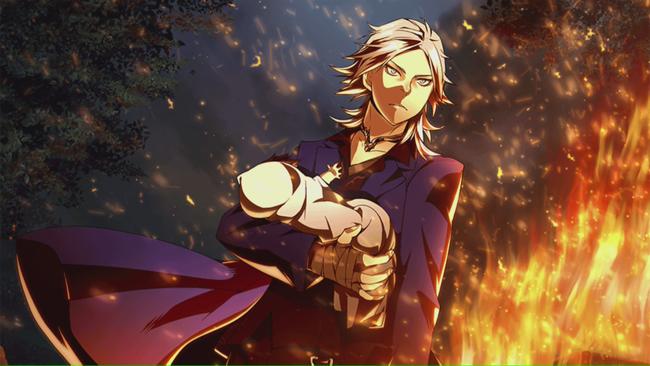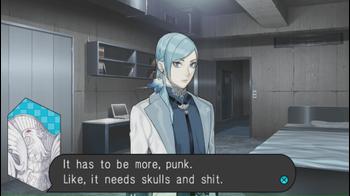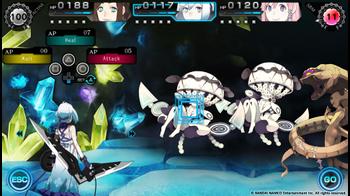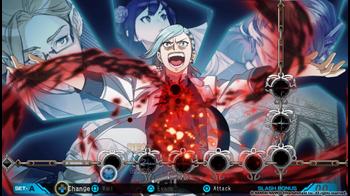
Ray Gigant Review
The Vita has had no shortage of dungeon crawler RPGs in the past few years. Following the recent release of Stranger of Sword City, yet another 'DRPG' from Experience lands on the platform in English. Ray Gigant is a bit different from Experience's other offerings, however. Rather than using the common class and party systems typical to the genre, this title decides to mix in several visual novel elements alongside the usual first-person dungeon exploration.
Ray Gigant follows three main characters - Ichiya, Kyle, and Nil - in a world ravaged by the mysterious appearance of large creatures known appropriately as Gigants. Each of these three characters are accompanied by a "Yorigami", a sentient amulet of sorts that allows the trio to wield considerable power as well the ability to vanquish these monsters. The Yorigami themselves are characters like any other in the game, each with their own voice and personality.
The game is separated into three main sections, with each main character getting a chance to take the lead. Despite a changing perspective, the story itself is still linear. Ichiya's story leads into Kyle's story, which in turn leads into Nil's story. You are not seeing the same events through different viewpoints, more that the viewpoint changes as the story progresses forward.
It's not too much of a stretch to say Ray Gigant is 'half dungeon crawler, half visual novel'. To put it candidly, there is a lot more dialogue than you would typically find from other Experience titles, and a lot more focus on character interaction and narrative.
The localization by acttil is well done when it comes to character lines and writing - most of the time. The personalities shine through how the characters speak and interact with each other.
However, while some character personalities and traits feel appropriately mixed into the dialogue, others devolve into overused quirks.
The worst example is a character who feels to need to mention bars, alcohol, or drinking at any possible chance. It's just a shame that while some characters are pretty believable in their words and action while a few are nothing more than a gimmick.
At large, the narrative is most similar to the popular anime series Neon Genesis Evangelion. With the appearance of these Gigants, factions have arisen to counter and neutralize the worldly threat, hinging on the abilities of the young main cast. In order to combat the Gigants, the characters are thrown into various dungeons to find Markers which help locate where the creatures will show up next. In between story scenes, you'll find yourself diving into these labyrinths on a regular basis.
The twist is that these various factions have different stances and ideals for how humanity should engage the Gigants. Throughout Ray Gigant, the player learns about the different goals and histories of the game's many characters There's enough mystery, intrigue, shifting loyalties, and secrets that kept me interested most of the way through.

I was honestly a little surprised how invested I was in learning more about the story as more and more wrenches were thrown into the building narrative. However, the ultimate ending to the game did leave me mostly unsatisfied.
There was potential in how the narrative was shaping up, but the game goes out with a whimper on that front. The fact that the game's epilogue is locked to a second playthrough doesn't help matters, and even then those scenes don't add much for the conclusion.
As for the dungeon crawling half of Ray Gigant, although the game definitely ramps up the visual novel elements, it doesn't slouch on the dungeon design. In fact, sometimes the maps themselves are trickier than what is offered in Stranger of Sword City. Warp puzzles, one-way paths, switch puzzles - there's certainly enough to keep things interesting.
It feels in some ways that Ray Gigant is a dungeon crawler made for people who are not typically fans of the genre. First of all, the game is not at all challenging. Where other Experience titles have their fair share of difficulty spikes and trickier boss encounters, Ray Gigant is more than manageable the entire way through. Being honest, I found myself wishing there was a bit more challenge at many places in the game. People looking to mostly enjoy the characters and story might appreciate the smoother ride.
The game is also very linear in structure. You can only go to one dungeon at any given time, to do one task at any given time. Unlike Stranger of Sword City, in which you might have to decide to collect new equipment or seek out additional boss encounters, in Ray Gigant the goal is much more streamlined.
The player doesn't have to worry about creating their own parties either. Your in-battle characters are decided for you at all points throughout the game. There are no classes or race, just the characters you have at the time.
In addition, Ray Gigant does not have random battles. All enemies appear as icons on the map.
This makes navigating puzzles a little less stressful as you can clear floors as you attempt to figure out the tricks of the labyrinth, not having to worry too much about running into annoying battles all the time.
When it comes to the base gameplay of Ray Gigant, the game does several things a little bit differently than what is typical for turn-based RPGs, so let me list a few of them out. For example, the party has an Action Point (AP) pool in combat, and any action taken - healing, defending, or attacking - will subtract some points. AP can be gained when a character takes (or dodges) enemy attacks. AP is not recovered in between bouts, so it's up to the player to manage AP as they go from battle to battle.
Character health is, however, replenished at the beginning of every battle. This make it such that, while staying alive is of course crucial, the player is really spending more effort focusing on AP rather than health.
On top of all this, every ten turns or so, the party is sent into a 'Parasitism' state, where actions deplete from HP instead of AP. This is a bit of a double edge sword - while it can be dangerous, sometimes saving AP in this mode can be more useful, especially considering any HP lost will be regained by the next battle.
Character progression is a little bit different too. There is no EXP in Ray Gigant. Instead, the primary way to power up your party is through gems found in the labyrinths - both picked up on the map or dropped from enemies.
There are a total of six distinctive types of gems that can be collected, which can be used in skill trees to power up stats and obtain new abilities. Even equipment is gained through these character trees using these gems.
While it's not effectively different than more typical character progression, it does allow for a little bit of flexibility in how the player configures their party members. However, these many battles mechanics do feel less impactful than they could be because the difficulty remains low through the endgame.
The last thing to mention is Slash Beat Mode. This is a sort of minigame which activates special attacks. It's a simple system: before using these ultimate attacks, a theme plays where the player must match the beat with the icons on screen similar to a rhythm game.
Music actually plays a notable role throughout Ray Gigant, and each character has a distinct musical style attributed to them. Ichiya's battle, dungeon, and 'Slash Beat' theme are very jazzy in nature with lots of saxophone and brass-like instrumentation. Kyle's music is more sterile and techno styled, while Nil's music is softer, utilizing piano and strings. It's neat how musical elements fits into both the character personalities and into their battles and special attacks.
While the dungeon design was largely on point and I found a lot to like with the characters, the main thing about Ray Gigant that I found issue with was the general structure of the game. It's quite repetitive in nature, both in the story and in the gameplay.
The party goes to a dungeon to find a marker, a Gigant appears, the party goes into a mini-dungeon to reach the Gigant, and then you fight it. Repeat this in between story scenes and that's the majority of the game. Especially coupled with the lack of challenge throughout, I felt there is missed potential despite some cool ideas in the battle system design.
Ray Gigant is an interesting mesh of dungeon crawling and visual novel elements. The combat is unique and the presentation is great for the genre, but the repetitive nature, lack of challenge, and disappointing conclusion prevent the game from reaching excellence.


